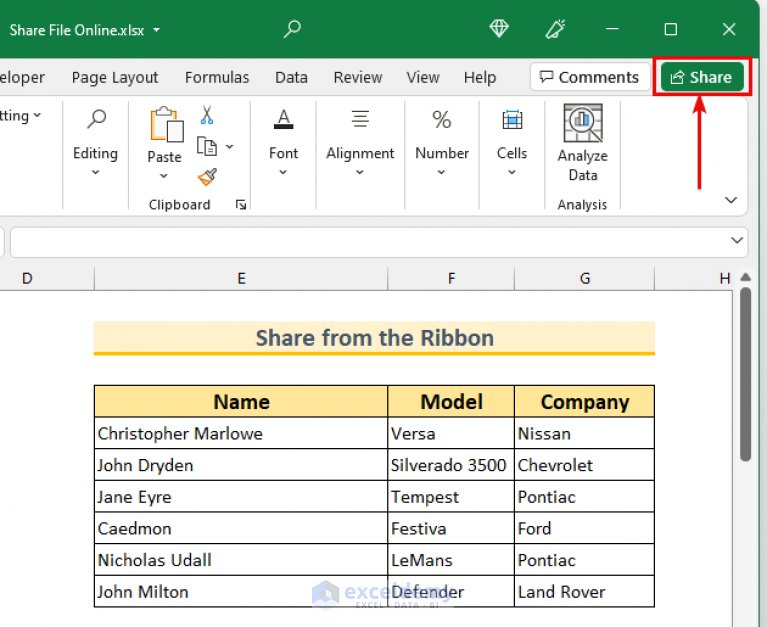How to Share Just One Excel Sheet Easily

In today's fast-paced business environment, Excel remains a cornerstone tool for data analysis, reporting, and collaboration. Often, we're not looking to share an entire workbook but rather just a single sheet or tab. This need arises frequently, whether for collaboration, reporting, or simply for providing a subset of data without the baggage of the whole workbook. Let's explore how you can share just one Excel sheet with ease.
Why Share Only One Excel Sheet?

Before diving into the “how,” understanding the “why” can provide context:
- Privacy and Confidentiality: Sharing a single sheet helps in maintaining the privacy of other sheets which might contain sensitive information.
- Efficiency: Reduces the file size and download time, especially useful when dealing with large workbooks.
- Clarity: When your audience only needs to focus on specific data, sharing the relevant sheet simplifies communication.
Methods to Share a Single Excel Sheet

There are several techniques to share just one sheet from an Excel workbook:
1. Save the Sheet as a Separate Workbook

One of the most straightforward methods:
- Right-click the tab of the sheet you want to share.
- Choose “Move or Copy.”
- Select “(new book)” from the “To book” dropdown, and choose to create a copy.
- Save this new workbook with only the desired sheet.
📌 Note: This method creates a new file, so any changes in the original sheet won’t reflect in the shared file, and vice versa.
2. Exporting to a Different File Format

You can also export the sheet to formats like CSV or PDF:
- Select the sheet you want to export.
- Go to File > Save As or Export depending on your Excel version.
- Choose the file type (like CSV or PDF), and save.
This method is excellent when the recipient doesn’t need Excel but can work with other formats.
3. Using Excel’s Built-in Sharing Features

Excel offers features like OneDrive or SharePoint to share workbooks:
- Save your workbook to OneDrive or SharePoint.
- Use the share button or right-click on the file to get the sharing link.
- You can then specify permissions for what you’re sharing.
4. Sheet Level Protection

For collaboration where you want to allow edits on one sheet but not others:
- Right-click on the sheet tab and choose “Protect Sheet.”
- Set permissions to allow editing on this sheet.
- Protect the other sheets with a password.
This way, you can share the entire workbook while protecting other sheets.
5. Linking and Embedding

Instead of sharing the data, you can share a link to it:
- Create a new workbook.
- In this new workbook, select the cell where you want to link or embed data.
- Use Excel’s function “=HYPERLINK()” to link to the original sheet, or use “Insert -> Object” to embed the data.
Summing Up
To recap, sharing just one Excel sheet can be achieved through various methods tailored to your specific needs, whether it's for privacy, file size, or ease of use. You can either save the sheet as a separate file, export to different formats, utilize Excel's online sharing capabilities, apply sheet level protection, or link/ embed the data. By choosing the right method, you ensure your data is communicated effectively and securely. Remember, understanding your audience's needs and the nature of the data helps in deciding the best approach to share one Excel sheet.
Can I share just one sheet from an Excel workbook without creating a new file?

+
Yes, by using Excel’s built-in sharing features or by protecting other sheets in the workbook while allowing edits on the one you want to share.
What are the advantages of sharing only one sheet?

+
Advantages include privacy protection, reducing file size, improving efficiency, and focusing the audience’s attention on specific data.
Is it possible to keep my Excel sheet updated when shared?

+
Yes, by using online sharing platforms like OneDrive or SharePoint, where changes are synchronized in real-time, or by creating linked data sources.



